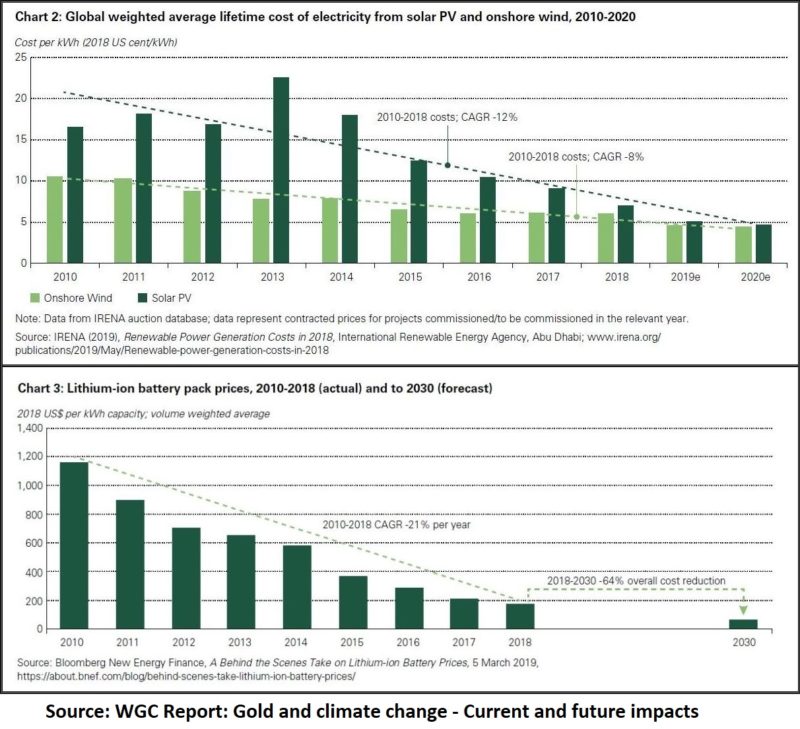The World Gold Council (WGC) published this week a report titled “Gold and Climate Change: Current And Future Impacts.”
The report analyzes gold’s climate impact, and how the sector, particularly gold mining, could reduce its carbon footprint in consonance with the Paris climate accord, according to a review by Kitco.com.
The report revealed that gold mining and production accounted for the bulk of the sector’s carbon emissions. Last year, for every tonne of gold produced, greenhouse gas emissions released were 32,689 tonnes. Within mining, power generation through diesel fuel was the main source of carbon emissions.
According to the WGC report, the replacement of diesel sourced power presented the biggest scope for decarbonization. Replacing diesel with renewable sources of energy had now become economically feasible too.
“Costs for renewable energy have reduced rapidly and consistently over the past decade, driven down with the huge increase in deployment,” the report said. “From a purely economic perspective, therefore, there is a clear business case for the rapid replacement of diesel power with renewables.”
The decline in costs is seen both in renewable generation as well as in battery storage (Refer to the feature image).
Enormous decarbonization was also possible in mining transportation through the use of electric or fuel-cell powered vehicles and haulers.
“Ultimately, we believe that electrification of vehicles and other equipment, powered by renewables and combined with energy storage, will make it feasible and cost-effective for the gold industry to reduce emissions by up to 95% over the time-scale required,” the WGC said.
Read the Kitco.com article HERE.
Image Source: World Gold Council Report

